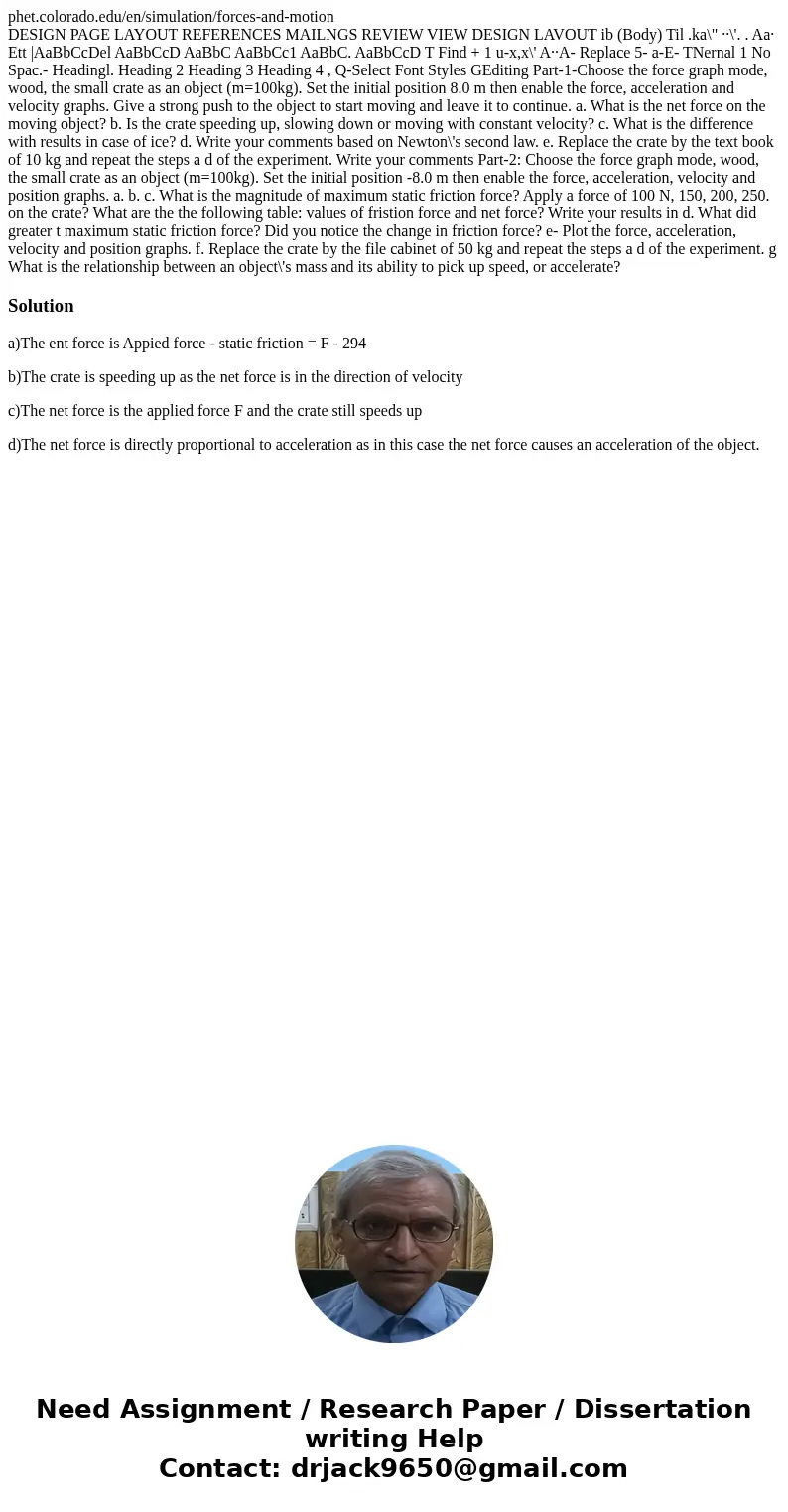phetcoloradoeduensimulationforcesandmotion DESIGN PAGE LAYOU
phet.colorado.edu/en/simulation/forces-and-motion
DESIGN PAGE LAYOUT REFERENCES MAILNGS REVIEW VIEW DESIGN LAVOUT ib (Body) Til .ka\" ··\'. . Aa· Ett |AaBbCcDel AaBbCcD AaBbC AaBbCc1 AaBbC. AaBbCcD T Find + 1 u-x,x\' A··A- Replace 5- a-E- TNernal 1 No Spac.- Headingl. Heading 2 Heading 3 Heading 4 , Q-Select Font Styles GEditing Part-1-Choose the force graph mode, wood, the small crate as an object (m=100kg). Set the initial position 8.0 m then enable the force, acceleration and velocity graphs. Give a strong push to the object to start moving and leave it to continue. a. What is the net force on the moving object? b. Is the crate speeding up, slowing down or moving with constant velocity? c. What is the difference with results in case of ice? d. Write your comments based on Newton\'s second law. e. Replace the crate by the text book of 10 kg and repeat the steps a d of the experiment. Write your comments Part-2: Choose the force graph mode, wood, the small crate as an object (m=100kg). Set the initial position -8.0 m then enable the force, acceleration, velocity and position graphs. a. b. c. What is the magnitude of maximum static friction force? Apply a force of 100 N, 150, 200, 250. on the crate? What are the the following table: values of fristion force and net force? Write your results in d. What did greater t maximum static friction force? Did you notice the change in friction force? e- Plot the force, acceleration, velocity and position graphs. f. Replace the crate by the file cabinet of 50 kg and repeat the steps a d of the experiment. g What is the relationship between an object\'s mass and its ability to pick up speed, or accelerate? Solution
a)The ent force is Appied force - static friction = F - 294
b)The crate is speeding up as the net force is in the direction of velocity
c)The net force is the applied force F and the crate still speeds up
d)The net force is directly proportional to acceleration as in this case the net force causes an acceleration of the object.

 Homework Sourse
Homework Sourse